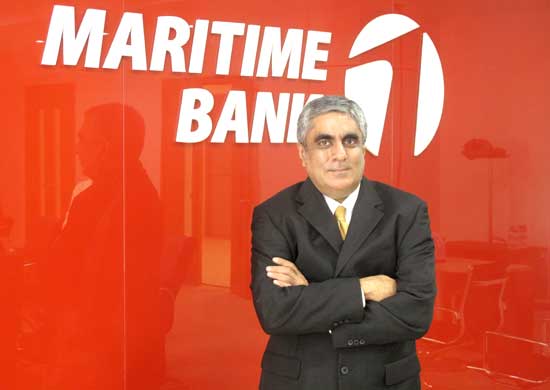With the expected credit growth of only 10-12 per cent this year, Maritime Bank general director Atul Malik told VIR’s Trinh Trang that a diversified source of revenue would bring the bank sustainable profits.
After three months in your role, what challenges have you found working in Vietnam?
In Vietnam, there are some best global practices and there are some practices that are completely local, so the combination is necessary. There are a lot of similarities in both practices, for instance, Vietnamese companies often focus on human resource management and owners of Vietnamese companies have similar visions as other company owners in the world. However, sometimes Vietnamese companies focus on market share more than profitability.
Are there lots of opportunities for Maritime Bank, given 2012 is a challenging year?
Maritime Bank has good strategy, which is relevant to Vietnam market. Second, we have qualified people. We have ability to attract qualified staffs and retain them, a stable Maritime Bank executive board is evidence of this. Third, we focus a lot on execution, when you have a good strategy, the most important is to execute that strategy well.
Maritime Bank is also restructuring. We are doing strategic review on all business lines we are doing, we identify which business line we believe have high growth and high potential profit and invest in it. For example, we are enhancing retail, lending to houses, developing credit cards. They are very important for us, so we put resources in these business lines and stop business lines that are not profitable.
Lending, which is the main source of profit for Vietnamese banks, was very slow in the first half of this year. What is your management direction until the year-end to help Maritime Bank achieve its year-plan profitability target?
This year although Maritime Bank is granted a credit growth limit of 17 per cent, Maritime Bank expected to use only 10-12 per cent only. But I think diversified source of revenue can help to meet our goal. For example, besides credit activities, we launch the wealth management business, bancassurance, credit cards, we will focus on retail banking and we get fees from that.
To achieve the year-plan goal, besides diversified source of revenue, you have to be efficient in managing the bank. If credit growth is not good enough, but you can manage your expense not to go as fast as revenue, your profit will be very good.
So how is Maritime Bank efficiently managing non-performing loans?
We have a very extensive risk management department, we make sure new loans will be really good, make sure new customers have a good business model.
We also help other existing customers, which are in a tough time and just have temporary liquidity problems, but their business module is good for medium and long term. For those customers, we dropped interest rates, extended the deadline of the loan and gave them financial advice when necessary.
Both global and domestic demand is not very high so companies must try to become more efficient and manage their expenses. Moreover, because domestic interest rates are falling, customers can compete better with other exporters in other countries. Maritime Bank will go with our customers to help them manage through the downturn.
Do you think establishing a national asset management company to deal with banking system non-performing loans (NPLs) is necessary?
I agreed with the idea to establish an asset management company. However, the State Bank is still considering when it is set up. It will not be an easy task and it will take time as deciding the price of loans, which kind of discount, using which pricing perception are big questions and very complicated. I don’t know how much capital is enough for that company as we must look at the entire economy and all banks’ NPLs to know how much the company can buy, especially when current NPLs are growing rapidly.




